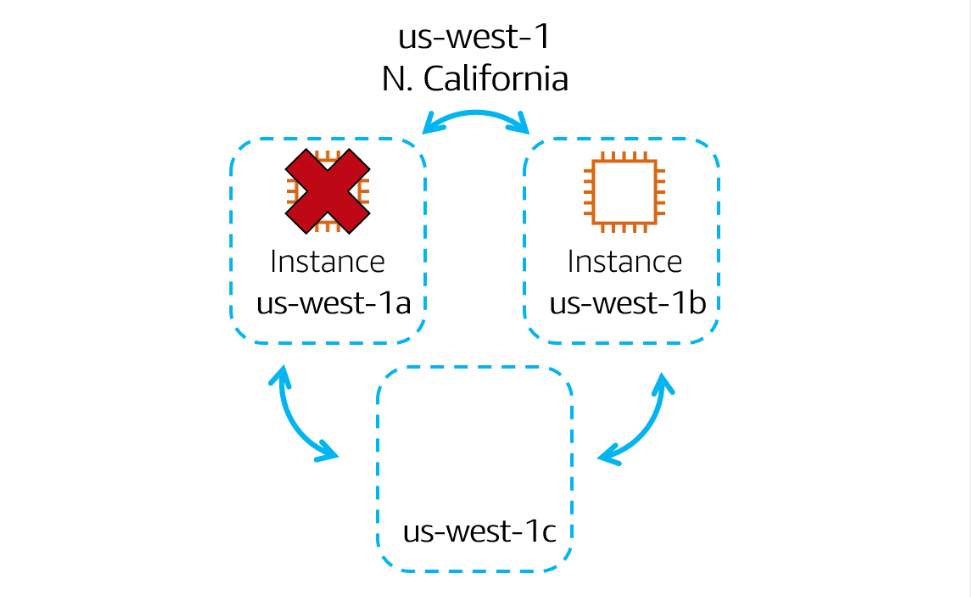
AWS Global Infrastructure
- High availability and fault tolerance
- All sorts of deferent areas (regions)
AWS DATA CENTERS
- Helps with when disasters happen.
- Building our data centers in the large data group
- High-Speed Fiber Network
- Each Area is isolated (Security)
AWS Regions
- Data in one region doesn't go to others
- except for making it specifically.
How to choose AWS Regions?
- Compliance
- Look at requirements (UK boundary?)
- data governance and legal requirements
- Proximity
- How close to customers
- Latency: Time between customers and servers
- Feature availability
- New services might not available in another region.
- Ex: Amazon Braket >> can run in specific locations
- Pricing
- Some locations are more expensive to run
- ex: Brazil >> more expensive due to tax
Availability Zones:

AWS Data Centers
AWS Availability Zone
An Availability Zone is a single data center or a group of data centers within a Region. Availability Zones are located tens of miles apart from each other. This is close enough to have low latency (the time between when content requested and received) between Availability Zones. However, if a disaster occurs in one part of the Region, they are distant enough to reduce the chance that multiple Availability Zones are affected.
- Run multiple instances >> help with cases of disasters
- Run across at least two different regions
- Elastic Load Balancing (Regional Services)
EXAMPLES:
Amazon EC2 instance in a single availability zone

Suppose that you’re running an application on a single Amazon EC2 instance in the Northern California Region. The instance is running in the us-west-1a Availability Zone. If us-west-1a were to fail, you would lose your instance.
Amazon EC2 instance in multiple availability zones

A best practice is to run applications across at least two Availability Zones in a Region. In this example, you might choose to run a second Amazon EC2 instance in us-west-1b.
Availability Zone failure

If us-west-1a were to fail, your application would still be running in us-west-1b.
Words:
- A Region is a geographical area that contains AWS resources.
- An edge location is a data center that an AWS service uses to perform service-specific operations. Edge locations are examined in the next section of this module.
- AWS Outposts is a service that you can use to run AWS infrastructure, services, and tools in your own on-premises data center in a hybrid approach. AWS Outposts is explored later in this module.
'AWS > Global Infrastructure and Reliability' 카테고리의 다른 글
| How to provision AWS resources (Elastic Beanstalk, CloudFormation) (0) | 2022.05.03 |
|---|---|
| Edge Locations, AWS CloudFront, AWS route 53 (0) | 2022.05.03 |